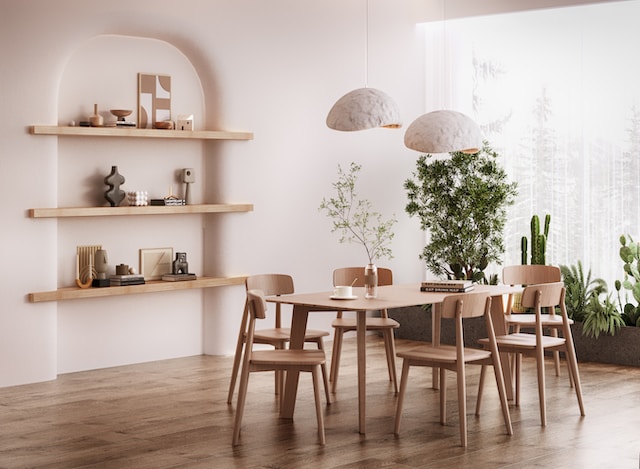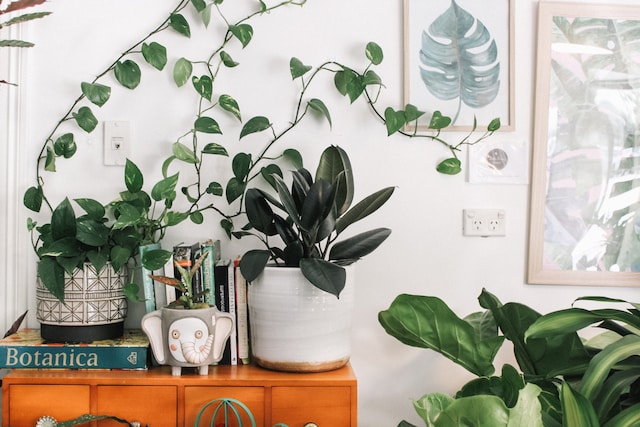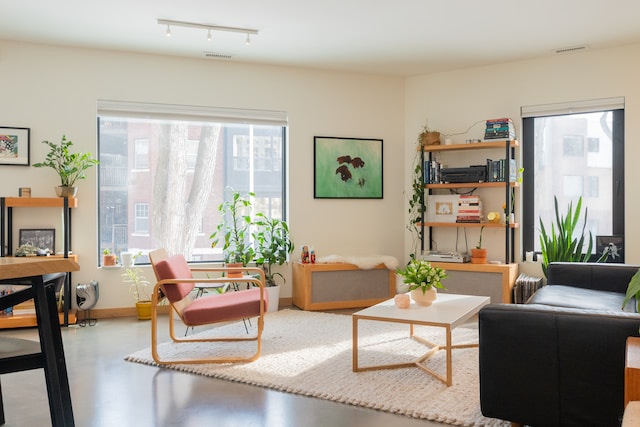Wabi-Sabi Wisdom Embracing Imperfection in Your Home Decor
Posted by Emily Parker on 19th Dec 2023
Wabi-sabi, a concept deeply rooted in Japanese aesthetics, is about finding beauty in imperfection. Originating from the tea ceremonies of 15th-century Japan, it emphasizes simplicity, naturalness, and a serene melancholy. When translated into home decor, this philosophy encourages us to embrace the charm of worn, aged, and imperfect items, bringing a peaceful, authentic atmosphere to our living spaces. Adopting wabi-sabi wisdom can transform your home into a haven of tranquility and natural beauty. So, let's find out how you can do this!
1. Celebrate the Patina of Time
Embracing wabi-sabi wisdom in your home means celebrating the journey and story of each item. It's about valuing the patina that time bestows upon materials. For instance, a wooden table bearing the marks of years, a gracefully faded rug, or a small chip vase can bring your home an authentic and lived-in feel. Each scratch, dent, or imperfection tells a story of resilience, of life well-lived.
Each mark on antique furniture narrates its unique history, adding value and character to your space.
These aren’t flaws; they're badges of honor. They truly speak to the wabi-sabi philosophy of finding beauty in the passage of time and use. It’s about seeing the elegance in the weathered and the worn, allowing these pieces to add depth, character, and a sense of history to your living space. Let your home be a gallery of life, showcasing the beauty that comes only with time.
2. The Art of Asymmetry
Embracing asymmetry in your home decor is a fundamental expression of the wabi-sabi concept. This concept finds beauty in imbalance and irregularity. It challenges the traditional notion that perfection is synonymous with symmetry. Therefore, experiment with asymmetrical arrangements to add a unique and captivating visual appeal. For instance, you could place a collection of local art and decor in an off-center alignment on your wall or mix and match furniture pieces of varying heights and styles.
That adds an element of surprise and infuses your space with a relaxed, effortless charm, which is a key aspect of the wabi-sabi aesthetic. It mirrors the natural world, where perfect symmetry is rare, and invites creativity, allowing you to play with shapes and layouts. This approach to design celebrates the uniqueness of each piece and creates a space that is both intriguing and deeply personal.
3. Harmony with Nature
Incorporating elements of nature into your home decor is a cornerstone of wabi-sabi. This philosophy encourages using materials and elements that bring in an aspect of the outside world, creating a bridge between your indoor and outdoor spaces. Think of adding houseplants for a touch of greenery, using natural wood for furniture, or incorporating stone accents.
Adding plants to your decor is a nod to wabi-sabi wisdom, inviting nature's imperfect beauty into your home.
Textures such as woven baskets or linen throws add a tactile and visually appealing element. Natural materials create a calming atmosphere and remind us of life's transient beauty. They bring an unrefined, organic elegance to your home, embracing the irregularities and imperfections inherent in nature. This approach to decor fosters a sense of peace and grounding, vital in our fast-paced world, making your home a true sanctuary.
4. Embracing the Imperfect
The Japanese art of Kintsugi, where broken pottery is repaired with gold, teaches us to find beauty in flaws and celebrate them. This philosophy can be applied to your home decor by appreciating and showcasing items that are cracked, chipped, or otherwise 'imperfect.' A ceramic bowl with a hairline crack, a vase with a missing piece, or a frayed edge on a beloved throw can be powerful symbols of resilience and uniqueness.
These pieces become one-of-a-kind home decor, each with a story and character. By highlighting these imperfections, you're not only embracing the wabi-sabi aesthetic. More than that, you're also creating a deeply personal and authentic space. It’s a reminder that perfection isn't the goal in both life and decor – it’s the beauty of the journey and the stories we gather along the way that matter.
5. Simplifying Spaces
A key principle of wabi-sabi is simplicity and the elimination of clutter. Creating a space that feels open, tranquil, and intentional is important to embrace this aesthetic truly. That might mean parting with items that no longer serve a purpose or bring joy. However, be mindful and listen to the advice from preferred-movers.com when discarding or transporting bulky items into storage. These experienced professionals note that you should always leave the heavy lifting to the pros to avoid injury and focus on the fun part – the design.
Simplifying your space goes beyond mere aesthetics; it’s about creating an environment where each item is chosen carefully and is significant. It's about focusing on quality over quantity and allowing the remaining pieces to breathe and shine. In a simplified space, each item has room to tell its story, and the overall atmosphere becomes one of calm and clarity, aligning perfectly with the wabi-sabi ethos of serenity and authenticity.
6. Mindful Lighting and Color
Light and color are essential for creating a wabi-sabi atmosphere in your home. Soft, warm lighting can transform a space, imbuing it with a calm and soothing ambiance. It’s about choosing light fixtures that emit a gentle glow, casting shadows that add depth and dimension to your rooms.
Mindful lighting and color choices create a tranquil ambiance, essential for a serene and harmonious living space.
When it comes to color, wabi-sabi prefers a palette inspired by the natural world. For instance, earthy tones, muted greens, soft grays, and understated blues create a serene backdrop that complements the other elements of your decor. These colors, reminiscent of the outdoors, bring tranquility and a sense of harmony, essential in a wabi-sabi-inspired home. By being mindful of lighting and color choices, you can create a beautiful environment that feels peaceful and grounding.
Final Thoughts on the Wabi-Sabi Wisdom
In conclusion, wabi-sabi wisdom is not about striving for a perfectly styled home. It's about celebrating the natural, the old, and the imperfect. Specifically, it’s a philosophy that encourages you to find beauty in the flaws and to appreciate the stories that your living space tells. By incorporating these principles, you can create a home that not only exudes a unique charm but also fosters a sense of peace and authenticity.
Remember, the goal is to design a home that makes you happy, where imperfections are accepted and cherished. Embrace this wisdom in your decor, and let your home be a testament to the beauty of embracing life's imperfections.
Author's Bio:
Emily Parker is a creative home stylist and a passionate writer. With a knack for blending traditional wisdom with contemporary design, she loves to inspire others to find beauty in simplicity. Emily believes that a well-loved home reflects the soul of its inhabitants.



